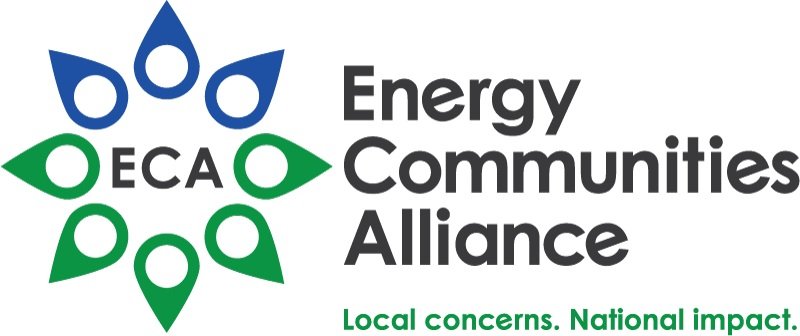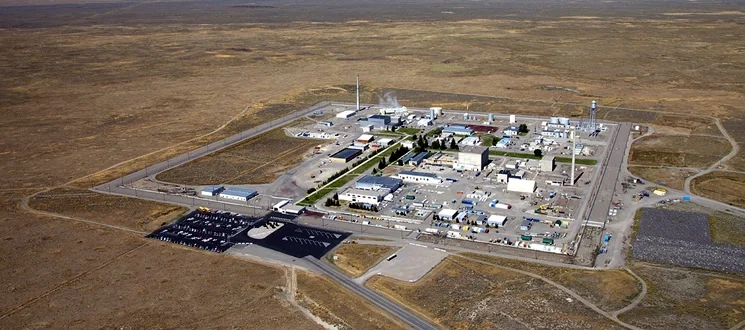IDAHO
Photo courtesy of Energy.gov
DASHBOARD
-
The Idaho National Laboratory (INL), an 890-square-mile section of desert in Eastern Idaho, was established in 1949 as the National Reactor Testing Station. Initially, the missions at the INL were the development of civilian and defense nuclear reactor technologies and management of spent nuclear fuel. Fifty-two reactors—most of them first-of-a-kind—were built, including the Navy’s first prototype nuclear propulsion plant. Of the 52 reactors, three remain in operation at the site. In 1951, the INL achieved one of the most significant scientific accomplishments of the century—the first use of nuclear fission to produce a usable quantity of electricity at the Experimental Breeder Reactor No. 1 (EBR-1). The EBR-1 is now a Registered National Historic Landmark open to the public.
During the 1970s, the name of the site was changed from the National Reactor Testing Station to the Idaho National Engineering Laboratory. This change reflected the broadened mission into biotechnology, energy and materials research, and conservation and renewable energy. The name changed again in 1997 to the Idaho National Engineering and Environmental Laboratory. This change reflected a major refocus toward engineering applications and environmental solutions. On February 1, 2005, the name changed again to the Idaho National Laboratory (INL). This change reflects a move back to the laboratory’s historic roots in nuclear energy and national security.
View a “Virtual Field Trip” of Idaho National Laboratory produced by Discovery Education and the American Nuclear Society.
-
-
Shoshone-Bannock Tribes
-
Idaho Advanced Energy Consortium - The purpose of the Idaho Advanced Energy Consortium (IAEC) is to convene industry stakeholders across the advanced energy sector to identify, plan, and address the evolving shared supply chain, workforce, community, infrastructure and security needs. These needs center around advancements in nuclear and clean energy and their related projects in Idaho and the region.
Idaho Cleanup Project Citizens Advisory Board - A federally appointed citizens' panel that provides independent advice and recommendations to the Office of Assistant Secretary, and designees, for the U.S. Department of Energy's (DOE) Environmental Management (EM) Program.
-
Battelle Energy Alliance (BEA) – INL Management & Operations
BEA is made up of Battelle, BWX Technologies, Inc., Amentum, Electric Power Research Institute (EPRI), and University Partners
Idaho Environmental Coalition, LLC (IEC)
In 2021, the Idaho Environmental Coalition, LLC (IEC) was selected by the U.S. Department of Energy (DOE) to manage cleanup operations at the Idaho National Laboratory (INL) Site under a ten-year, $6.4 billion contract. IEC is led by Jacobs and includes North Wind Portage as a partner.
-
Federal Government
State Government
Local Government
-
Idaho National Laboratory
Sarah Neumann
Phone: (208) 526-0490; Email: Sarah.Robertson@inl.gov
Idaho Cleanup Project Citizens Advisory Board
Jordan Davies, Project Staff
Phone: (208) 557-7886; Email: Jordan.Davies@em.doe.gov
City of Idaho Falls
Kimberly Felker, Public Information Officer
Phone: (208) 612-8122; Email: kfelker@idahofalls.gov
Site Budget
| FY 2024 Enacted | FY 2025 Enacted | FY 2026 House Bill | FY 2026 Request |
|---|---|---|---|
| 489,705 | 492,511 | 460,021 | 460,021 |
(INL Defense Environmental Cleanup. Amounts in thousands of dollars. Click here for the latest site budget.)
Nicholas Balsmeier
Acting Manager, Idaho Cleanup Project
CLEANUP ISSUES
-
Special Nuclear Materials and Spent Nuclear Fuel
Transuranic and Solid Waste Disposition
Tank Waste
Soil and Groundwater Remediation
Ongoing D&D of the prototype reactors at NNSA Naval Reactors
-
In March 2024, the Office of Environmental Management released a Strategic Vision for 2024-2034.
Planned Cleanup Scope 2024–2034
Over the course of the next decade, cleanup activities at the INL Site will focus on completing treatment of remaining liquid sodium-bearing waste, facility decontamination and demolition at Naval Reactors Facility (NRF), shipping the remaining balance of TRU waste, and demolition and closure of facilities at RWMC and INTEC.
Nuclear Energy Projects
-
Oklo Inc.’s Aurora Fuel Fabrication Facility will be located at Idaho National Laboratory (INL) and will help turn used material recovered from DOE’s former Experimental Breeder Reactor II (EBR-II) into usable fuel for its advanced nuclear power plant. The Aurora powerhouse is a liquid-metal-cooled fast reactor that is designed to operate on both fresh high-assay low-enriched uranium (HALEU) and spent nuclear fuel (SNF). These fuels allow the powerhouse to produce about 15 MWe and usable heat. Oklo anticipates the first commercial Aurora powerhouse will be deployed in 2027.
-
Repurposing the Experimental Breed Reactor II’s containment structure, the INL Nuclear Reactor Innovation Center Demonstration of Microreactor Experiments (NRIC DOME) will host multiple private companies. Initial selections for demonstrations include Radiant’s Kaleidos unit and Westinghouse’s eVinci reactor. Click here to learn more about the project.
-
INL is building the Microreactor Applications Research Validation and Evaluation (MARVEL) microreactor, anticipated to produce about 85 kilowatts of heat, which will be converted to approximately 20 kilowatts of electricity - the capacity to power 10 homes. MARVEL will help federal researchers understand how to build, operate, and eventually decommission a new reactor design, and will provide private industry with important insights into how to develop their own reactors and make progress toward commercialization. MARVEL is planned to be operational in 2026. Click here to learn more about the project.
-
Aalo Atomics is cooperating with Idaho Falls Power in a project to deploy seven Aalo-1 microreactors, totaling 75MWe of generation in Idaho Falls, ID. The utility said Aalo Atomics would lease land for the life of the project, up to 80 years at Idaho Falls Power’s Energy Research Park. Click here to learn more about the project.
-
In a partnership between DOE and the Department of Defense (DOD) Strategic Capabilities Office, the objective is to design, build, and demonstrate a prototype mobile nuclear reactor within 5 years. DOD broke ground at INL on September 24, 2024, and plans to have the transportable reactor sited in 2026. The goal is to deploy the facility at an Air Force base in Alaska. Click here to learn more about the project.
-
In February 2019, the U.S. Department of Energy (DOE) announced its plans to build a Versatile Test Reactor, or VTR. Once built, the research community will be able to leverage VTR’s high neutron flux to test nuclear materials 10 times faster than what is currently capable today.
VTR will:
Modernize DOE’s essential nuclear energy research and development infrastructure.
Accelerate the development of advanced nuclear fuels, materials, instrumentation, and sensors.
Reestablish the United States as a global leader in nuclear science and innovation.
Support the nation’s goal of reaching net-zero carbon emissions by 2050.
The VTR project is led by Idaho National Laboratory in partnership with five national laboratories (Argonne, Los Alamos, Oak Ridge, Pacific Northwest, and Savannah River) and includes a host of industry and university partners.
Updated October 2025.
Information in this profile is sourced from DOE, NNSA, and the site’s online resources.



